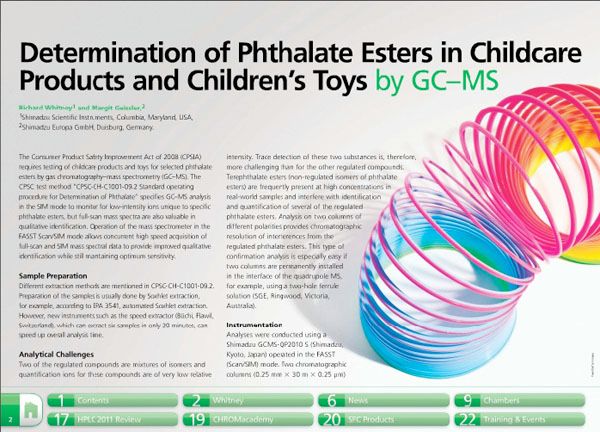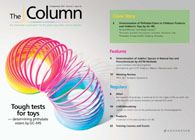Determination of Phthalate Esters in Childcare Products and Children's Toys by GC-MS
In this article we look at the determination of phthalate esters in childcare products and children's toys by GC-MS.
The Consumer Product Safety Improvement Act of 2008 (CPSIA) requires testing of childcare products and toys for selected phthalate esters by gas chromatography–mass spectrometry (GC–MS). The CPSC test method “CPSC-CH-C1001-09.2 Standard operating procedure for Determination of Phthalate” specifies GC–MS analysis in the SIM mode to monitor for low-intensity ions unique to specific phthalate esters, but full-scan mass spectra are also valuable in qualitative identification. Operation of the mass spectrometer in the FASST Scan/SIM mode allows concurrent high speed acquisition of full-scan and SIM mass spectral data to provide improved qualitative identification while still maintaining optimum sensitivity.
New Study Reviews Chromatography Methods for Flavonoid Analysis
April 21st 2025Flavonoids are widely used metabolites that carry out various functions in different industries, such as food and cosmetics. Detecting, separating, and quantifying them in fruit species can be a complicated process.
University of Rouen-Normandy Scientists Explore Eco-Friendly Sampling Approach for GC-HRMS
April 17th 2025Root exudates—substances secreted by living plant roots—are challenging to sample, as they are typically extracted using artificial devices and can vary widely in both quantity and composition across plant species.
Sorbonne Researchers Develop Miniaturized GC Detector for VOC Analysis
April 16th 2025A team of scientists from the Paris university developed and optimized MAVERIC, a miniaturized and autonomous gas chromatography (GC) system coupled to a nano-gravimetric detector (NGD) based on a NEMS (nano-electromechanical-system) resonator.

.png&w=3840&q=75)

.png&w=3840&q=75)



.png&w=3840&q=75)



.png&w=3840&q=75)












